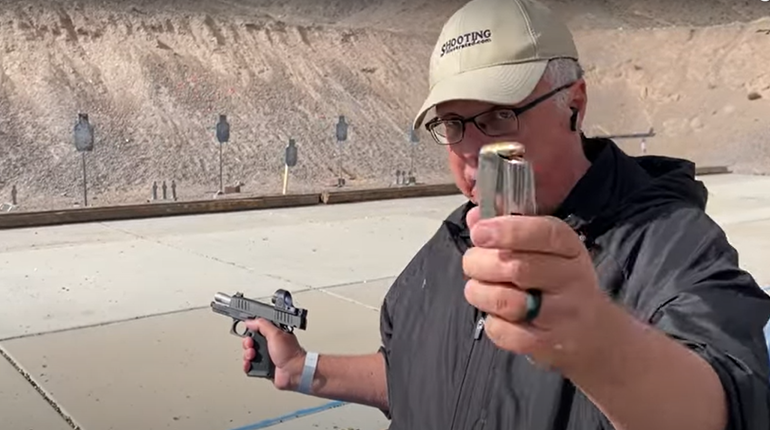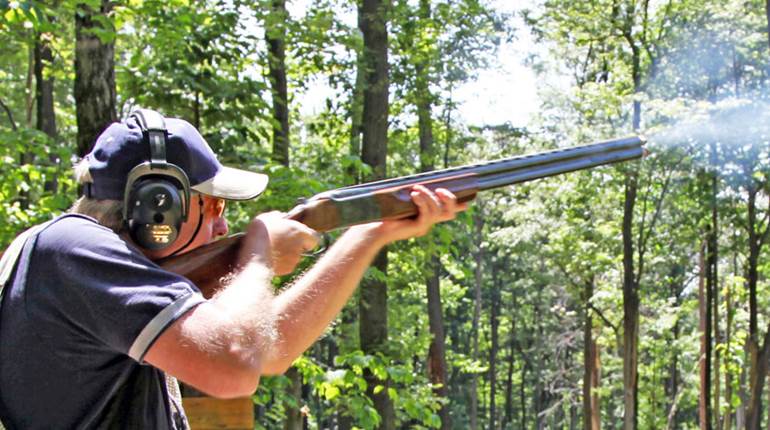
Having a first-aid kit for firearms never crossed my mind until, of course, I needed one. I was on my first big game hunt outside my home state. My hunting partner’s zero on his rifle had shifted, no doubt caused by the 1,500 mile drive that began in Charleston, W. Va., and ended in New Castle, Wyo. During our pre-hunt sight check, my hunting partner discovered his rear windage base screw was missing, which explained the erratic pattern his rifle was spitting out.
I had a jar full of the screws—back home. And so, the race began to find a screw before season opened, and the idea of a first-aid kit for firearms slowly materialized. Over the years, I discovered that firearm first-aid kits can and should vary with the type of hunt and firearm you are using.
Rifles—A minimalist’s kit
For pack-in hunts where space comes at a premium and the ability to carry full size tools—hammers, punches and screwdrivers—is too prohibitive, a multi-purpose tool is the answer. While any multi-purpose tool would be handy, Brownell’s AR-15/M16 Multitasker II is an excellent starting point. Don’t let the name fool you, while it might be aimed (pardon the pun) toward AR owners, the tool offers every firearm owner the specific tools needed to get his or her firearm up and running again. It includes pliers, file, carbon scraper, a dental pick, which unscrews and accepts cleaning accessories, 10 hex-head screwdriver bit tips, Phillips and standard screwdrivers of various sizes, plus T10 and T15 Torx head bits for scope rings and bases. The Multitasker II accepts these bits with an integrated magnetic drive-socket built into the tool, and it all fits into a nylon belt pouch.
For cleaning emergencies, the compact Otis Technology All Caliber Rifle Cleaning System and an AP brush covers the gamut for nearly every type and caliber rifle or shotgun.
I don’t clean my firearms in the field unless extreme weather, an obstructed bore or mechanical failure necessitates it, but nothing can end a hunt like a bore full of mud or an ejector rendered useless due to a piece of debris.
A little more space
If space allows, I pack a solid one-piece cleaning rod to knock out any mud, stuck case or other obstruction from the bore. I prefer a coated rod like one from Dewey complete with a full battery of accessories and brushes. These one piece rods remove obstructions much easier than a makeshift cleaning rod. One word of advice: Before putting a cleaning rod in service, ensure all the brushes and accessories fit the cleaning rod.
Even more space
With a tad more space, room enough to fit neatly inside an ammo can, I include three punches—small, medium and large—a small hammer with brass and plastic head, scope base and ring screws with an appropriate screwdriver to fit both.
Optics
No amount of fortune-telling can foresee an optics failure, and for that reason I carry a back-up scope mounted in rings to fit the base or bases mounted on my firearm. This back-up scope is just that—a back- up. It does not have to be a variable 50 mm objective mega scope; a small fixed-power will suffice. Quick-detach rings make switching scopes a snap, but even a scope mounted in Redfield type (dovetail and windage screws) bases can be mounted and sighted in an emergency—saving the hunt. I wrap this back-up scope in bubble wrap to protect it from scratches and bumps that might occur in my travels.
Other items that might come in handy
If your rifle uses a detachable magazine, include one in your kit. I also carry an extra sling, complete with sling swivels, tucked in my kit. On one occasion, the keepers on my sling broke, and I’ve replaced faulty sling swivels several times.
Shotguns
Upland bird or waterfowlers would get along well with the same tools, replacing the rifle cleaning kit with an Otis Shotgun Cleaning System and an Outers Tico Tool for a quick barrel swab.
One advantage of most modern autoloaders and pump guns is commonality; interchangeable barrels, fire control mechanism (trigger groups) and bolts can help determine what parts should be in your kit.
In 25 years of carrying my old Remington 870, I have broken a total of one extractor, losing the spring and plunger. Luckily, I was hunting close to home and was able to replace it in short order. Since then, an extractor, extractor spring and extractor spring plunger have found a home in my kit. To keep these and other small parts from rolling around or getting lost in the bottom of the kit or an accidental spill, I put them in small plastic bottles. The bottles are transparent so I can immediately see their contents.
If you can get a spare fire control unit, buy it and put it in your kit. At a minimum, keep an extra sear spring and a set of trigger pins in your kit. Having spares could keep you in the field hunting rather than scrambling to find a gunsmith. And while you’re at it, a gas operated shotgun kit should include extra gas rings or a piston.
I also keep a couple sight beads like the one mounted on my barrel in case one turns up missing. The multi-tool pliers can be used to install them until professional help can be obtained. For hunters using the HI-Viz or Tru-Glo type sights, extra light pipes should have a place in their kit.
Finally, a kit for a shotgun with a magazine tube should include a spare magazine cap, magazine follower, magazine spring, magazine tube spring retainer and three-shot adapter (plug).
It’s impossible to determine where, when or if a gun gaff might occur, but by hedging your bets with a firearm first-aid kit, you can greatly minimize the likelihood of a disastrous and abrupt end of a hunt due to firearm failure.






































